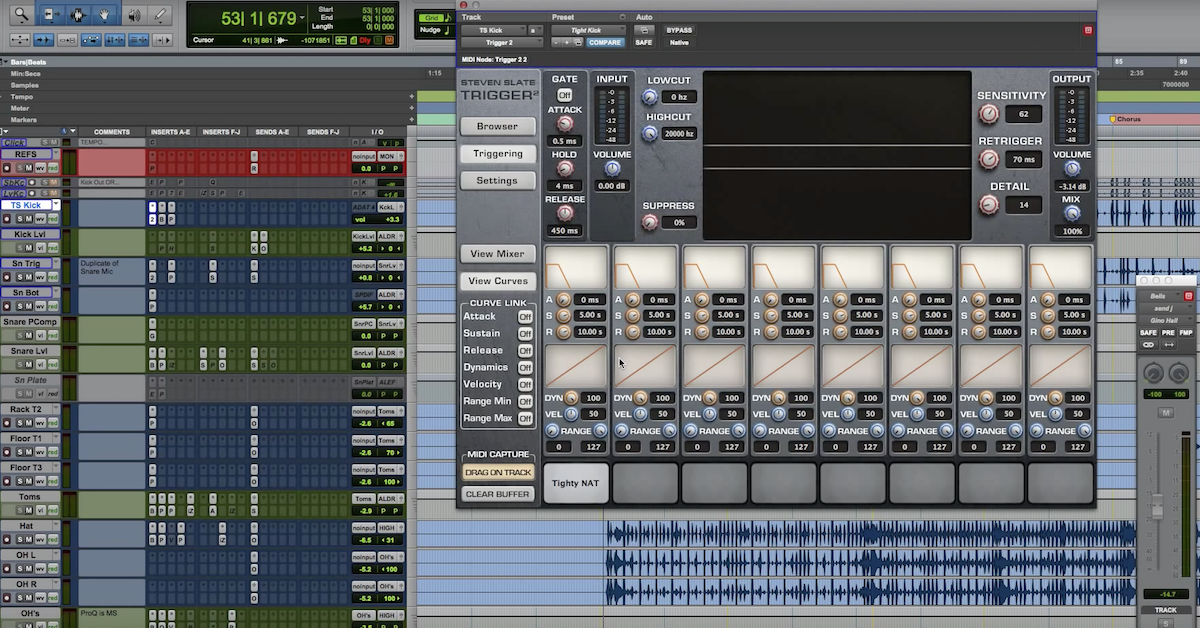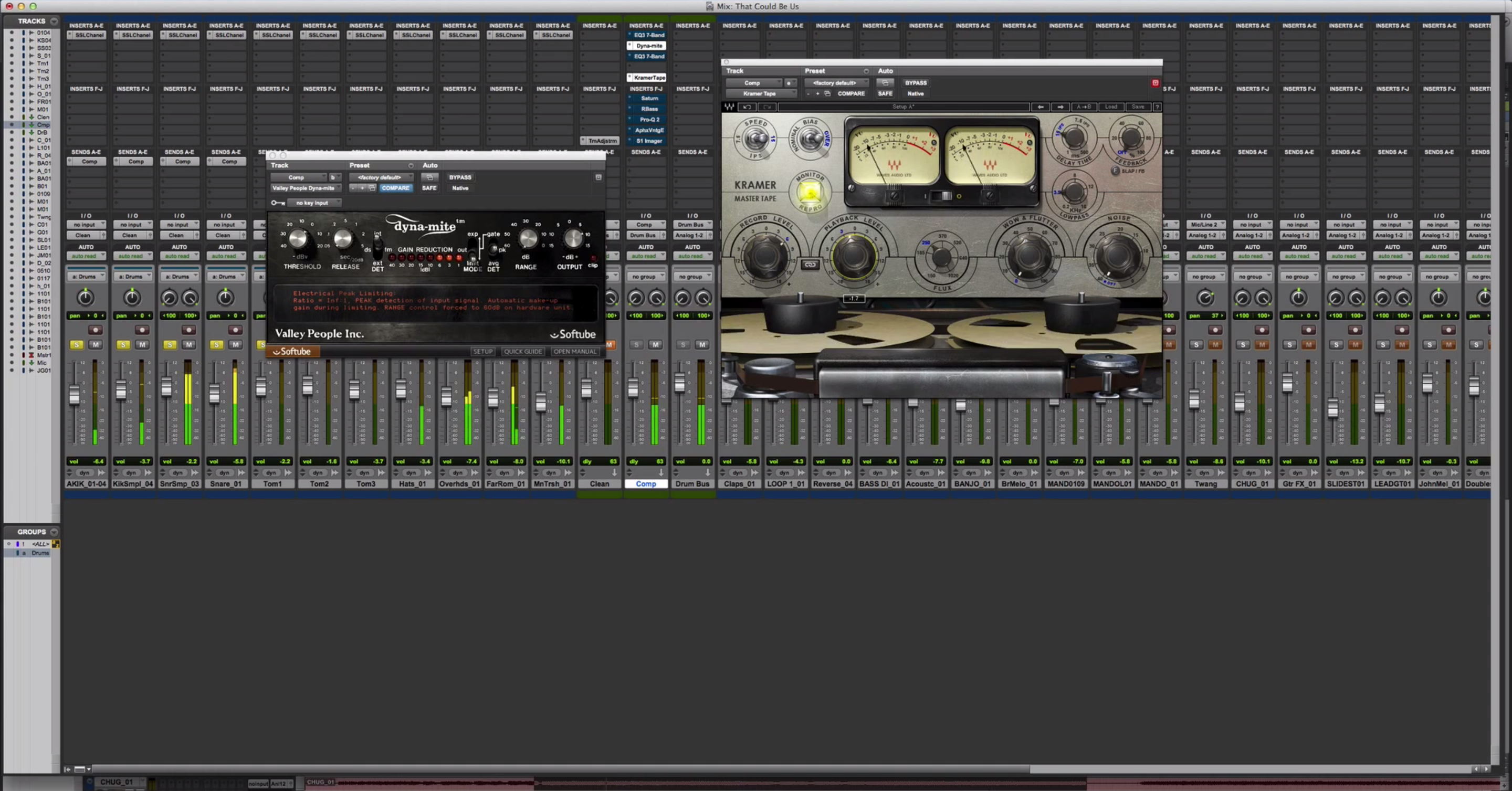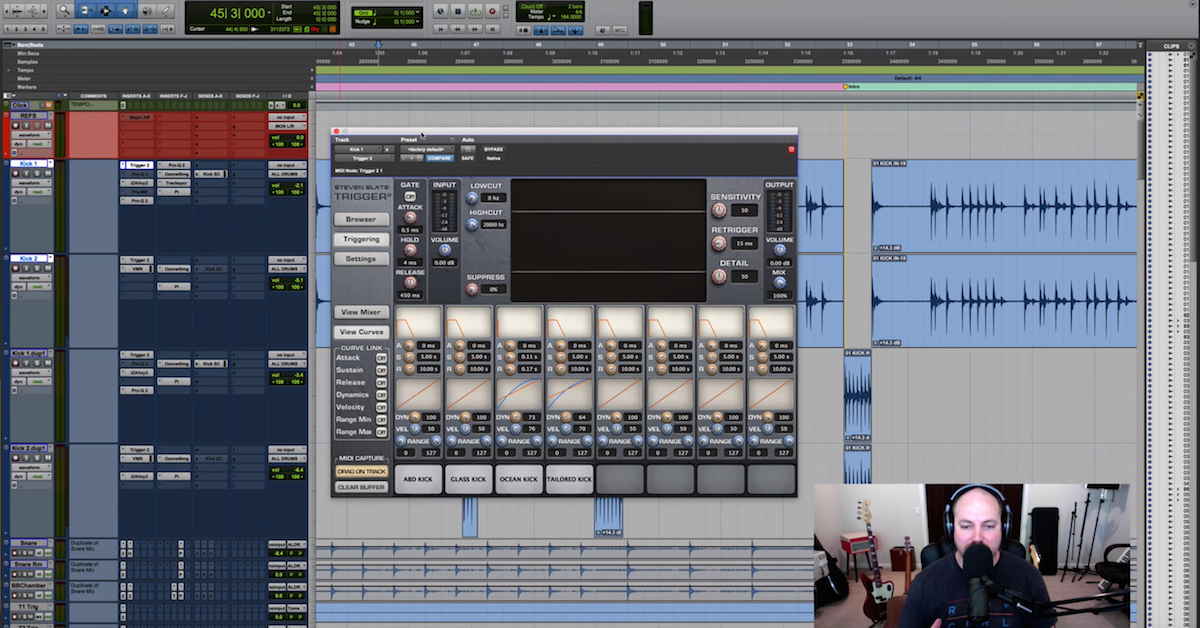Tips for Processing Replaced Kick Drums with EQ, Saturation & More
So we’re going to kick it off in this first video, featuring the track, “I Don’t Know,” from my new friend Nolan Garrett. He’s been kind enough to share that with us over at themixacademy.com this month, and so I wanted to kind of give him some love and show him a couple of things that I would do to the kick drum.
So, live kick. I’ve chosen to replace the kick in this particular instance, and what I’m going to do is I’m going to show you a before and after, and then I’m going to walk you through it.
So, here’s his mix. This is released on iTunes. Go show him some love. I’ll throw a link in the description for you guys. This is the track, “I Don’t Know,” as it is on iTunes.
[song]
Okay. Then here’s my mix of it for The Mix Academy.
[song]
Okay. I should say my rough mix. I still have to do some cleaning up of it. Anyway, so the disclaimer as a mixer: the kick drum. So, I took quite a bit of a different direction. It could be good, it could be bad. It’s totally a taste thing. Give the song to ten different A-list or B-list mixers, you’re going to get ten different results. Anyways, let’s breakdown this kick drum. The before of it sounds something like this. I’m going to solo it and bypass everything. Actually, it wouldn’t be fair to exclude the sub-kick. So we’re going to bypass all of this processing on the sub-kick and the kick.
[kick drum]
Okay. So, it’s not bad. It doesn’t sound horrible, but if there’s anything I could say to describe that kick drum, it would be sort of bland, right? It doesn’t have too much character. It may have been EQ’d a little bit or whatnot, but I can hear this kick having some saturation to it, having some drive to it. A little bit more punch, a little bit more oomph, and what better way to have some fun mixing drums than to pull open your favorite sample libraries and start blending and replacing? So, I did choose to replace this kick, so let’s walk through some of that processing. First off, I’m going to mute the sub-kick for now just so you can hear what I’m doing, and I’ve got a kick I pulled in from the That Sound library over at iwantthatsound.com.
This is the Drop Kick from the Darren King collection. I don’t know that I touched it other than to reduce the room mics a little bit. Let’s check this out.
[kick plays]
Okay. So, I dig that. Almost night and day, right? We don’t have any bleed to deal with, we’ve got a nice solid oomph to that kick. I don’t even know how else to say it, but I still feel like we could do with a little more punch and a little more distortion. I want some grit for this kick drum.
So, I pulled open the trusty Neve 1073. Now, this is the UAD version, but the Slate VMR is great. You can use that one, T-Racks has got those. They all work really, really well. You may pull open something like a Lo-Fi or another type of distortion enhancing processor for doing this process, but I drove this.
So, here’s the before.
[kick, before and after processing]
Okay. Quite a volume difference, so forgive me for that, but hopefully you can hear that there’s quite a bit more drive, distortion, and character now into that drum.
Moving on from that, I’ve got an EQ, and because I’m using a sub-kick mic, or I created a sub-kick mic, the processing – the first step for me was to remove a little bit – not completely get rid of the lows or the subs, but to kind of pull those back a bit. So let’s hear that before and after.
[kick plays before and after EQ]
Okay, so we’ve retained the punch in the mid-range for sure, and you can see I chose to boost a little bit here. So many people will say, “ah, you’ve got to cut 400 to whatever automatically in a kick drum,” and that’s so not true.
Moving on from that argument, I touched it up with barely anything. Not even a dB of some click. It may have been just me experimenting, but moving on from that, this is kind of a big deal. This next one I’ve talked a little bit about tightening up kick drums. I think I used a pop/EDM/Dance mix type thing, but I’m doing a same, yet similar process, if not the same, with this live kick, and so going in with the multi-band transient designer, I’ve selected the frequency range here you’ll see from 0-97 Hz has got it’s own transient designer, and then here from 97-207 it’s got it’s own. Then up top, it’s got it’s own transient designer.
So, three frequency ranges to control independent of each other.
Then the sub-region below 100Hz or so, I’m boosting the crap out of the attack, and I’m cutting sustain like a beast. You can see that’s like, minus 12. I want you to hear the difference between that – I’m going to solo just this low band here, and we’re going to listen in.
So, what do I got that at, 6.5 and minus 12. Let’s hear the difference here.
[kick drum, only subs]
Okay. If you’re on a laptop or iPhone speaker, you’re probably not going to hear that. Throw on some headphones, you’ll hear it just fine.
Just a taste thing. I felt like I could tighten up the bottom end in the kick by sucking out the sustain. I didn’t want to gate it or do anything weird like that, so I just kind of tightened it up with this, and boosted some of the attack. I got a little more punch back in the subs. I’m going to put that back where it was.
Then, this next frequency range, let’s take a listen to that if I solo it. Again, this is just from 97-207ish?
[kick plays, low-mids soloed]
Okay. So, it’s subtle, but it’s there. A little bit of punch, a little bit of sustain coming back, and I didn’t really do anything to the top end. Let’s bypass this and let’s hear the difference before and after.
[kick, before and after transient designer]
Okay. So, just my preference and my taste was to tighten up the kick. You could have reversed that, and your taste may be to boost sustain and create a more trash can kind of sound, where it’s really long and decaying and sustained out.
But, the one thing it does sound is thin, so I’m going to bring in the sub-kick. For me, it’s just a complete duplicate of this live kick. Let me pull in the processing there. You can see, it’s the exact same kick, and then all I’m doing is cutting everything below 72Hz or so at a slope like 6-12dB. Then I’m just tightening up and making sure nothing below 20Hz gets in; it’s filtered out.
So, that by itself sounds like this. Same processing.
[sub kick drum]
Okay. Kind of weird by itself, right? But I just wanted a little bit of sub-kick. If you’re driving down the road, I’ve mentioned that before, just a little bit of lift in the bottom end. Then together, we’re going to play it first without the sub-kick, then we’ll blend it in.
[kick drum]
Okay. Then it’s important to note that you want to check for phase. I did end up reversing the polarity on this one, so I pull open the stock Digi one-band or whatever your preference is to check for phase. So here’s without that.
[kick plays without phase flipped]
It’s thin, right?
[kick drum keeps playing]
Then we get our low end back, so you want to check and make sure your tracks are in-phase.
So, for me, this kick drum, tightening it up is great and all, but for me, I like to tighten them up, suck out some of the sustain, but then send it to a little bit of a room, and I’ve got the Ocean Way room that I’m using for this.
I don’t know if I sent any – it looks like I did. So the sub is going to the room, but I’m more so looking for this live kick here to get some room, and so here’s that before and after.
[kick drum]
Okay. That helps a lot if you’ve got a kick drum where the song breaks down and it’s just the kick, like in a country song or a four on the floor where the kick is just going on it’s own, it can really help sometimes to send the kick to a room, and automate the room up for those four or five bars, and then put it back down. I’ve got some room into it, I think it sounds good. That’s my side-chain. I think I’ve covered that. We’ll talk about that more in another tutorial, but that is the kick.
The only other thing contributing to the kick sound is I have an Ocean Way instance down here where I’ve sent it to Sansamp, and then I’m filtering out some stuff that I didn’t like.
Let’s take a listen to the kick with and without that. Now, that is using the live sounds. I’m not sending the kick into that, per se. That’s coming from the overheads. But let’s hear it.
[kick drum plays]
Okay. So, a cool vibe going on there. And that, ladies and gentlemen, is the kick drum for this song, “I Don’t Know,” featuring Nolan Garrett. So, go check out themixacademy.com if you want to mix this song and get your hands on the files and all the tutorial training for that, and if you have any questions on how I’m processing this, any other things you want to see, go check out mixingdrums.com, and then feel free to e-mail me if you have any questions.
David@davidglennrecording.com, and we will catch you guys soon. Feel free to like, subscribe, share this with your friends if you dig it, if you’re learning from it. Spread the word, it helps us and helps more people, and we appreciate you for it.
Thanks guys, catch you on the next one!





